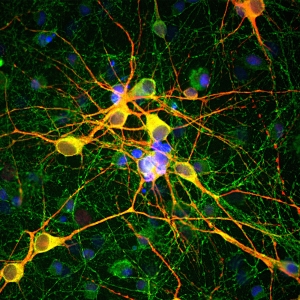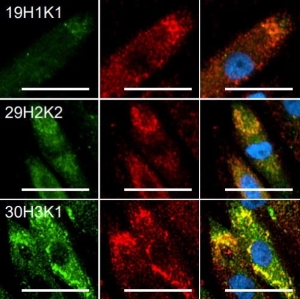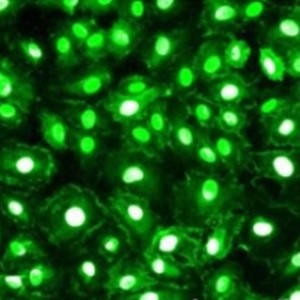Product Details
Product Sizes
| Size | List Price | Price | Cart |
|---|---|---|---|
| 100 ul | $329.00 | Add to Cart |
The heat shock proteins were discovered since they are heavily upregulated when cells are stressed by temperatures above the normal physiological range. They are expressed in unstressed cells also and have a normal function as chaperones, helping other proteins to fold correctly, but are required in much greater amounts if the cell or tissue is stressed by heat. Heat shock protein 27 (HSP27) is an abundant protein which functions as a chaperone but has many other functions. Upregulation of this protein is protective against neurodegenerative diseases at least in certain mouse models. Point mutations in the HSP27 gene are associated with two neurological diseases, Charcot-Marie-Tooth disease type 2F and distal hereditary motor neuropathy IIB. These diseases are associated with axonal loss apparently following defects in the transport of neurofilaments. HSP27 may bind cytoplamsic cytochrome c released from mitochondria which would otherwise normally activate the caspase apoptotic cascade. HSP27 is a major phosphoprotein of cells primarily under the influence of the p38/SAP kinase and JNK pathways. The central region of the HSP27 molecule corresponds to a crystallin domain, a compact module found in many chaperones and heat shock proteins. HSP27 is implicated in several other aspects of cell signaling and response to cancer and other diseases. The amino acid sequence of HSP27 is relatively poorly conserved across species boundaries, so there are 159 amino acids identities between human, cow, rat and mouse HSP27, out of 204-209 amino acids. This variability results in some antibodies being species specific while others work across many species. CH22133 was made against full length recombinant HSP27 expressed in and purified from E. coli. This antibody binds to an epitope on the human molecule missing from the rat and mouse homologue, likely variable peptides in the N and C terminal of human HSP27. Product Highlights: |
- Product Reviews- - Rating:
Leave a review for this product and you could be eligible for a $10 Starbucks gift card.
- Product Publications
Product Publications
If you've used this product in a publication, let us know. Email pshuster@neuromics.com, with the publication details and you could be eligible for an Amazon gift card.
- Related Products
Related Products
Name Catalog # Size HSP27/HSBP1 MO22123 100 ul HSP60 CH22117 100 ul HSP60 (D307) RA18029 100 ul HSP60 (D85) RA18030 100 ul HSP60 (Heat Shock Protein 60) MO22172 100 µl HSP60 (Heat Shock Protein 60) RA22149 100 ul
Images
Immunofluorescent analysis of HeLa cells stained with chicken pAb to HSP27, CH22133, dilution 1:1,000 in green, and costained with mouse mAb to HSP60 in red. Blue is DAPI staining of nuclear DNA. The CPCA-HSP27 antibody produces strong cytoplasmic staining, while the HSP60 antibody specifically labels mitochondria.
Immunofluorescent analysis of HeLa cells stained with chicken pAb to HSP27, CH22133, dilution 1:1,000 in green, and costained with mouse mAb to HSP60 in red. Blue is DAPI staining of nuclear DNA. The CPCA-HSP27 antibody produces strong cytoplasmic staining, while the HSP60 antibody specifically labels mitochondria.
Western blot analysis of whole cell lysates using chicken pAb to HSP27, CH22133, dilution 1:2,000, in red. [1] protein standard (red), [2] NIH-3T3 , [3] C6, [4] HeLa, [5] HEK293, [6] SH-SY5Y, and [7] COS-1 cells. Strong single band at 27kDa corresponds to the HSP27 protein strongly expressed in human cell lines.
Western blot analysis of whole cell lysates using chicken pAb to HSP27, CH22133, dilution 1:2,000, in red. [1] protein standard (red), [2] NIH-3T3 , [3] C6, [4] HeLa, [5] HEK293, [6] SH-SY5Y, and [7] COS-1 cells. Strong single band at 27kDa corresponds to the HSP27 protein strongly expressed in human cell lines.






